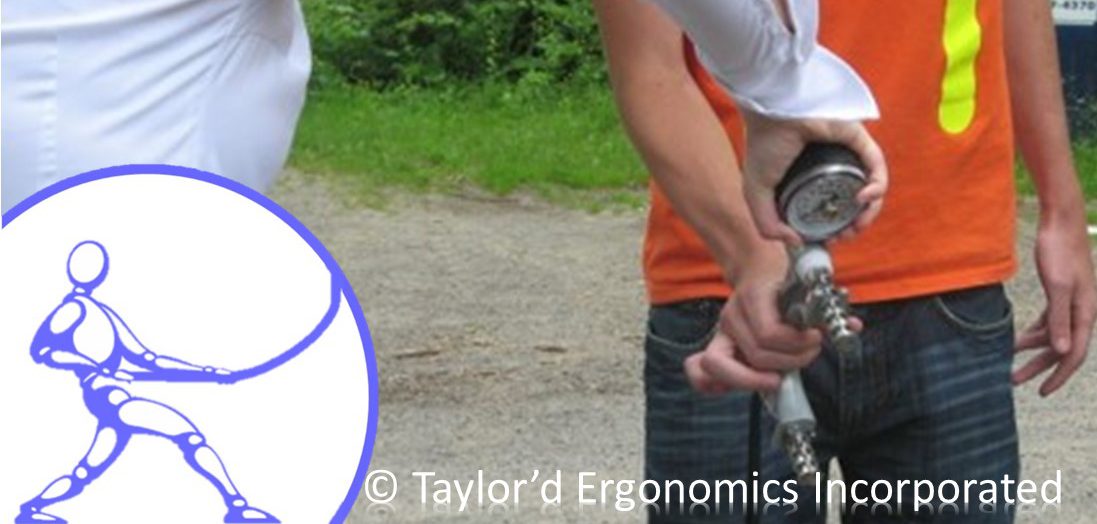We’re hiring to fill our Mississauga position, and soon we’ll be interviewing for summer interns, so I’ve been thinking about what characteristics allow an ergonomist to excel in the field.
A good ergonomist
At a minimum, an ergonomist should meet the Canadian ergonomics certification requirements, which can be found here. We have had ergonomics certification in Canada since 1998. A lot of employers don’t know (or perhaps care) about this, so many practicing ergonomists have never applied for certification. The title “Ergonomist” is not legally protected in Canada, so the only assurance available to employers and the public is through the CCCPE, which, in turn, is endorsed by the International Ergonomics Association. The educational requirements for certification represent the minimum knowledge needed to practice ergonomics competently; the minimum hours in each category were overhauled a few years ago, making certification more accessible for graduates from many universities. The course allocation requires a grand total of 800 contact hours, including at least 300 lecture hours in foundational courses such as anatomy, physiology, design, and evaluation, 100 lecture hours specifically in ergonomics, 100 lab hours, and 30 field hours. The ergo-specific hours are usually the most difficult to attain. The application deadlines are March 1 and September 1 every year, and it takes 6 months for the review to be completed.
I’ve met plenty of uncertified ergonomists who do well, and I’ve met some qualified ergonomists who don’t. But generally speaking, if a career in ergonomics is important to you, certification makes you more employable.
A great ergonomist ALSO has:
- A desire to connect with people. An ergonomist interacts with professionals, supervisors, and employees in a variety of settings. Some of them may not speak English well. Some of them may not be able to hear you. Some may have an agenda and they’ll be looking for support for their position. The truly great ergonomists that I’ve had the pleasure of working with over the years have been friendly and approachable. (Yes, that includes you, Josie!) Building relationships gets things done and results in collaborative solutions, which succeed because they have buy-in.
- Competent writing skills. Skills can always be learned, but this one ought to have been built about 15 years before a career in ergonomics. Somewhere along the line, great ergonomists learned that spelling does count in the real world, at least when communicating with clients. Spelling and grammar apps make writing so much easier than it was in the past! I’m responsible for the majority of peer-reviewing at Taylor’d Ergo; a concise, tidy report respects my time and the client’s time. Extensive report revisions use up project time that ought to be spent researching and implementing better solutions.
- Strategic thinking and focus. There are no deadline extensions in consulting. One way or another, we have to get the project done on time, within the time that we planned. That means executing the project plan, adjusting along the way, and seeking help as needed.
- An analytical approach. If you’ve trained as an ergonomist, you should be able to look at a job, identify MSD hazards, quantify them, and develop solutions. This will involve measurements and data analysis. We can teach the process, but if an ergonomist struggles to calculate a frequency, or doesn’t understand how a biomechanical model works, a job as a physical ergonomist won’t be enjoyable. A natural inquisitiveness about how things work helps, too. I confess that I didn’t enjoy physics in school, but I sure appreciate gravity, wheels, gears, and torque, now!
- Creativity. If you’re afraid to suggest a “creative” (aka little-bit-crazy) idea for fear of being mocked, this might not be the job for you. Great ergonomists have a desire to learn and to make connections, applying a solution from one industry to a problem in a completely different environment. For “science-minded” ergonomists, this is the most difficult part of the job.
We can teach new ergonomists to follow a process, apply analysis tools, and write reports that meet specific client needs; we have mentored dozens of ergonomists over the years. But the ones who truly excel are those who came to us with the potential to become great. Know any ergonomists who meet these criteria? Please send them our way!
Looking for a great ergonomist to work with your team? Give us a call….our team will be back to a full complement soon, and we’ll be growing again over the summer.


